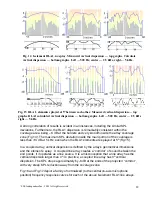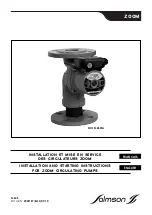
' SLS loudspeakers Inc., 2002. All rights reserved.
3
becomes a point source device. The distance, defining a border between the near and far
field zones, depends on the line source length and frequency [1]. Fig.1 depicts a
generalized diagram of vertical dispersion of a line source with a finite length.
The benefits of a line source in comparison to a point source system can be stated as
follows:
-
significantly smaller SPL reduction with distance allows for delivering higher sound
volume levels further to the audience
-
at a given sound volume level at the back of a venue (for example at 100ft, Fig.2
and Fig.3), a line source at Fig.3 will produce much smaller difference in SPL
levels throughout the venue, with SPL being significantly lower in close proximity to
the source (18 dB @ 1m, versus 30 dB for the point source). This provides very
comfortable listening conditions without the danger of overpowering the audience
in the front rows.
-
cylindrical wavefront provides very controlled energy dispersion in the plane which
coincides with the line source (in most applications this would be the vertical
plane), resulting in excellent intelligibility even in a very reverberant environment.
Fig. 1
Line array near/far
field concept.
D — distance from
the line to the
border of the far
field zone.
For 4m line array
D=25m
Fig.2 Point source dispersion. A 3 cone driver at 4 kHz. (SPL levels are
shown in boxes on the centerline, while distance in feet is shown at the top).




































